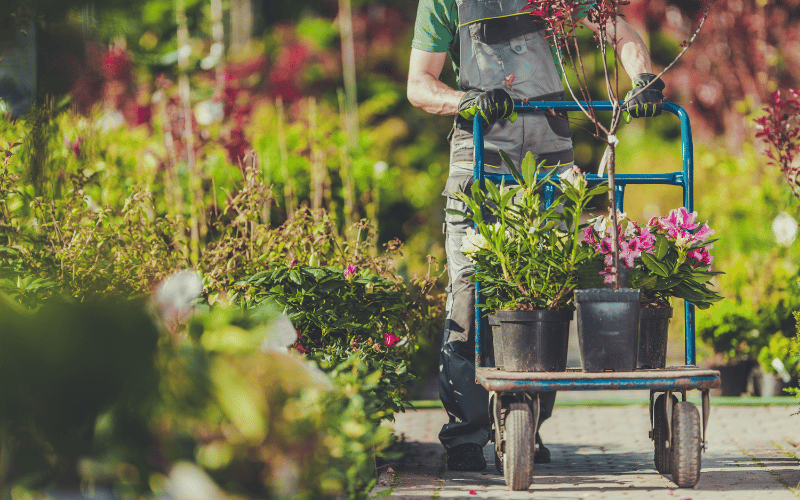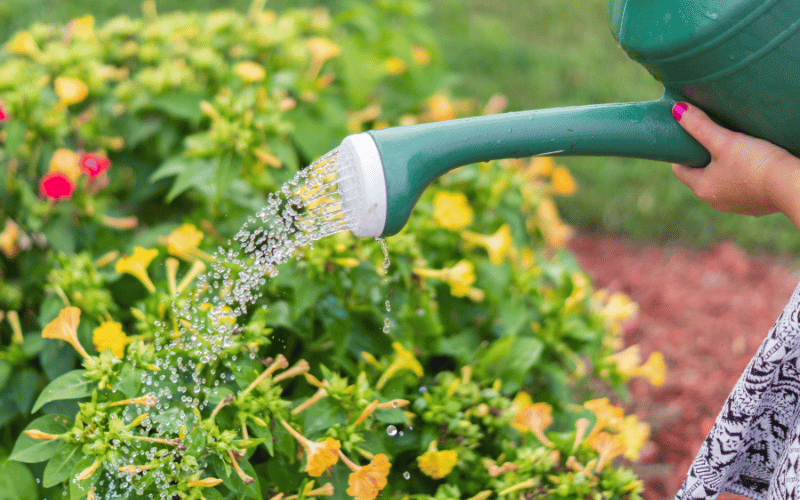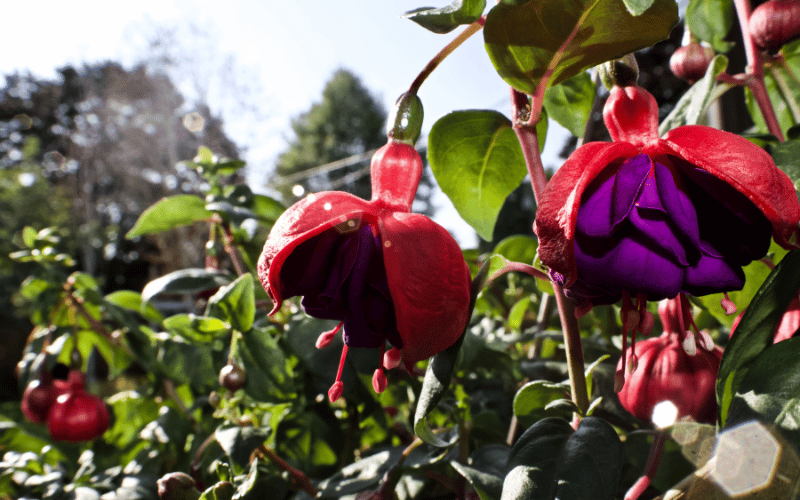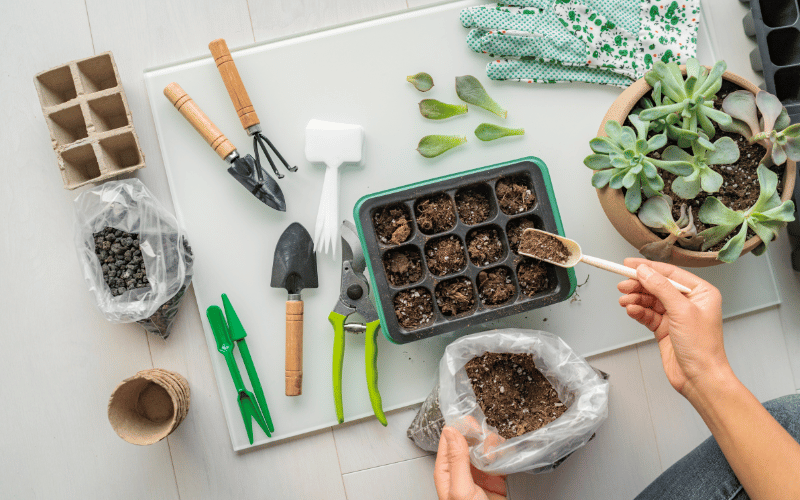Gardening Tips to Garden Don’ts - 10 Garden No No’s to Avoid this Spring

If you’re looking for some garden no no’s, or things to avoid, to ensure you are making the most of your learning-to-garden experience, you’ve come to the right place. When you’re a beginner gardener, or even a hobby gardener, there’s always a lot to learn in the way of gardening tips. From planning your long-game and planting perennials, to making sure you water your garden the right amount, and ensuring your garden is pet safe, there are a lot of things you should do when you learn to garden. There are also a lot of garden don’ts you should keep in mind to make sure you aren’t setting yourself up for failure.
Here are some of the top garden no no’s in our list of gardening tips:
Don’t ignore the sun’s path in your yard

Don’t plant too far from your water source
You’ve found the perfect spot on the far side of your yard for your new vegetable garden, but it’s quite the trek from your outdoor water supply. Do you plant there? This is a garden no no. Whether your plant need a lot of water or a little bit of water, it’s important to plant relatively close to your home’s water source. If you have a hose that is easily mobile throughout your yard, it might be a bit more tempting but if you’ve ever had to lug large watering cans back and forth several times to water your garden, you understand the added physical burden on the activity.

Don’t leave your soil exposed
A rule of {green} thumb is that exposed soil is generally considered unhealthy soil. When you’re putting in the work to love your garden, don’t forget to cover up your soil with mulch or other natural elements to help it keep healthy – and protect those earthworms that love just underneath. If you soil shows a lot of cracks, it’s overexposed to the elements and being underwatered.
Don’t plant just anywhere
Tying into the first three items on your garden no no list is that you shouldn’t just wing it when it comes to designing or planning your garden. Garden hack: once you’ve determined where the sun falls, and when, and you know where your water sources and shade are, you can draw out what you want to plant, where, and see if it works for you. Being random and spontaneous with your garden is a definite garden don’t if you want the garden to survive beyond one year of planting it.
Don’t ignore the seasons and your hardiness zone when selecting plants

Depending on where to reside, you know best what the approximate weather is like in your region – do you have mild winters or lots of snow? How many months of the year can you likely sustain a thriving garden? Hardiness zones help you to understand what varieties of fruits or vegetables or flowers can be grown in your home garden. Depending on how you’ve designed your home’s exterior, you may also have the benefit of micro-climates, such as windbreaks or thermal heat provided by a raised bed, garden wall or miniature greenhouse. If you want a more fruitful harvest in your home garden, don’t ignore your zones and the climate in your region.
Don’t cheap out with soil

Quality is important when considering which soil to purchase for your garden. Buying that bargain brand to save a few bucks is a big garden no no. Cheaper soil contains both contaminants and undesirable debris like rocks and root pieces, which can be damaging to the delicate structure of your garden. Flower beds need nutrient rich topsoil and most subsoils do not support strong plant growth over time.
Don't water the leaves
It can be so pretty to take your watering can over and water the entire plant, watching the droplets run down the leaves and into the soil around the base but it’s a big garden don’t. It’s best to water the base of the plant. The key reason for this is watering leaves that are directly exposed to sunlight causes more water to be lost via evaporation, especially when it’s hot. Therefore, the plant may not get the required amount of water for good health and garden growth. Another reason watering the leaves is a garden no no is because if the foliage gets wet, it can increase rot, fungal growth, and other disease problems.

Don’t use chemical fertilizers like synthetic nitrogen fertilizer
There’s a lot of talk about sustainability when it comes to the environment and one of the things often suggested to using synthetic fertilizers. If you’re thinking of putting them in your garden, don’t. Some of the key reasons for this include using synthetic nitrogen fertilizer in gardening and agriculture often contributes to harmful higher emissions of nitrous oxide as well as water pollution. Some of these fertilizers also contain pesticides, urea and arsenic which is toxic to your cats, dogs, and other wildlife.
Don’t overcrowd your plants in your garden

It’s no surprise that plants require space to spread their roots and stems and allow them to grow both underground and above. Sunlight can hit the right place on the vegetables or plants and water can be evenly spread where it needs to go. When planting within your garden, don’t sow your seeds too close together. The plants will have to compete for nutrients and moisture. Poor circulation of air within your garden bed also can lead to increased fungal diseases, pests and mites, and the plants being closer together, allows them to spread quicker, destroying more of your garden if you can’t act quickly enough to solve the problem. Garden hack: if you see pests or disease, treat the plant with the recommended herbicide or remove the plant.
Don’t walk in your garden beds - it compacts soil
Outside of running the risk of stomping on a cute, little sprout, it might not be immediately obvious why prancing through your garden bed is a huge garden no no. What happens, when you walk in your garden, especially on wet soil, the weight of your body pushing against the ground compacts the soil. Compacting basically squeezes all the oxygen out of it, removing the oxygen that your plants need and can result in the roots getting suffocated. Pushing it all together under the weight of your feet also means there is less room for the water to drain, further contributing to potential garden rot. For the same reasons, it’s a garden don’t to work soil when it’s wet, as it can destroy the soil’s structure. When the soil is too tightly compact and it hardens, the roots can no longer penetrate it and grow, therefore they can die out.
Don’t give up if you don’t get it right the first time!
One could argue that gardening can sometimes seem like baking, in that it’s a precise science and any deviations from the recipe could yield disastrous results. For the first time gardener, there are a lot of garden do’s and garden don’ts that you have to learn to get it right, but the outcomes can be amazing - from improved mental health and environmental impacts to physical exercise and increased Vitamin D. If your garden flops the very first time you try to build it, try, try and try again. And check out some of these Gardening Tips to make sure you’re ready to make the most out of your backyard this spring.

For larger projects, be sure to check out one of Marketplace Events Home & Garden Shows near you to get connected to experts in your region.
